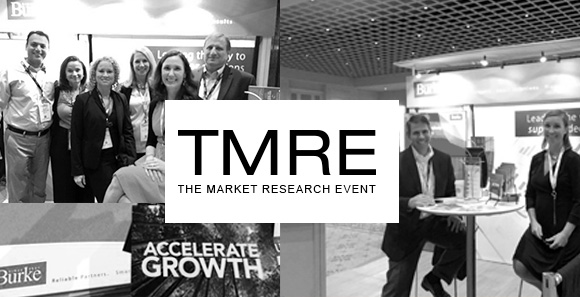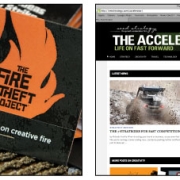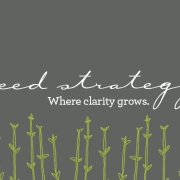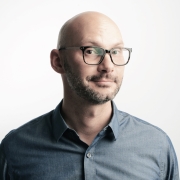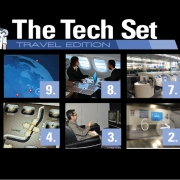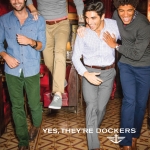Top Ten Takeaways From TMRE 2015
If you have ever been to The Market Research Event (TMRE), you probably know that unless you clone yourself, you are only physically able to attend about 23% of all the sessions.
And that’s if you really commit yourself, limit your networking time and ignore your email. There is so much content that it makes your head spin.
You end up negotiating with yourself as you try to decide which sessions to attend (“Does this session’s title sound more interesting than that one?”), or you flip a coin between two really good choices. And, despite careful selections, you inevitably miss a great session that everyone is talking about at the cocktail hour: (“Did you hear about the Heineken session where they shared how they did research in NYC clubs? It was amazing!” “I missed it.”)
What this means is that every person who attended TMRE 2015 likely had a totally unique experience and walked away with a different take on what was said. With that in mind, here are the top ten things that stood out to me during my 23%.
- According to Jonah Berger’s sources, 7% of all WOM (word-of-mouth) is online. That’s astounding when you think about the increasing dollars allocated to digital marketing and the effort that goes into deciphering what people say on social media (Barry Blyn, VP of Consumer Insights at ESPN, said his grave will someday read, “Tried to understand social media sentiment”). No doubt social media is rich territory for insight, but it makes me wonder about the predictive ability some say it holds, and the role of the remaining 93%.
- Seth Godin said that when it comes to the timing of innovation, it is always too soon. He also said you will never be ready, but you can be prepared. To me, this embodies meaningful innovation—one that launches into the unknown from a place of knowledge, to the extent possible. This is different than simply throwing things (anything) out there in hopes something sticks. But, there will always be risk.
- When designing research, researchers need to consider Daniel Kahneman’s two selves: the remembering self and the experiencing self. One presentation compared results of both and showed how they yielded different outcomes. They concluded neither is wrong and that the gap is still interesting. They are sides of the same coin and, rather than prove one right or wrong, I believe we need to understand which one serves our objectives better. If the objective is to improve the experience, get close to the moment to learn. If you are trying to understand influence, ask respondents to remember because, according to Kahneman, the remembering self is the one that makes the choices. Nevertheless, it was refreshing to see discussion around more than just system one and system two.
- Hilary Mason’s definition of a data scientist: the awesome, nerdy role at the intersection of math/stats expertise, code writing expertise and communication skills. I appreciate someone finally putting forth a description that makes sense to me. I was not surprised when she said that communication is the hardest skill to find after you find the other two. I wonder how difficult it will be to succeed in our pursuit of using big data if this combination of skills is so rare.
- Traditional methods are not wrong. New methods are not wrong. Big data is just data… and by the way, no data is complete. All together, traditional and new methods are the best way to learn and expand into what is possible. This was also from Hilary Mason’s talk. She did a great job of balancing the promise of big data and the hype of it being the one solution to everything. Removing the “big” from big data has a demystifying effect that will help people leverage its potential to evolve what we already do.
- Per Microsoft and Blue Ocean Business Intelligence, we need to rethink the market research skill set to be 70% business consultancy and 30% research operations. They also said that we need to hone our communication skills, or the utility of research suffers. I agree on both fronts. Maybe we could reapply Hilary’s data scientist skills framework to the definition of the new market researcher role as the intersection of business consulting expertise, research expertise and communication skills. However, something tells me we’ll have the same challenge searching for these highly skilled unicorns.
- We have a knee-jerk reaction to primary data collection as the answer to everything. I heard similar assertions in several different presentations, all pointing to the need to look around and use other sources of information available to us. Yes, we need to get more adept at thinking broadly about what else we could use to complement primary research, given the expanding toolkit for research and the prevalence of non-traditional data sources. The challenge will often be getting our hands on the information that exists in other places of an organization.
- Decisions are being made faster than research can provide answers. Agility was mentioned a lot at TMRE this year. Burke’s Accelerated Learning Labs™ presentation with Clorox was a great example of how you can meet some crazy timelines and still yield valuable insight when you are flexible and creative in your use of existing approaches, and collaborative with stakeholders. That methodology made sense for the situation Clorox was in and decision they needed to reach. Researchers need to get better at weighing the pros and cons of speed and rigor based on the decision at-hand in order to adapt accordingly.
- “Market research should be synonymous of synthesis, not surveys.” This was one of my favorite lines from the whole conference and it came from Microsoft’s Reed Cundiff. He described synthesis as taking analysis further to a point of overall meaning and action through the detection of patterns and the connection of disparate sources. I agree. We have a real opportunity to deliver value in a way that is severely needed in today’s environment of over-abundant information. What worries me is that on the surface, synthesis seems at odds with the speed and agility many require.
- Everything Dan Ariely. It’s hard to find a better speaker that makes such a good case for the importance of re-evaluating our beliefs about what really drives choice. Dan Ariely gave many examples that illustrate our irrational tendencies and how our intuitions are often wrong. He strongly encouraged us to “hack environments” to find the barriers to good behavior in order to change mindsets. His belief is that we are not driven by big objectives, aspirations or desires, even though we’d like to believe we are. It’s in the examination of the smaller things that we’ll find the keys to what truly drives choice.
Finally, as a bonus, here was the most humorous thing I saw at TMRE 2015:
Jonah Berger used a series of TV spots for Panda Cheese to illustrate the power of WOM. “Never Say No to Panda” was produced in Egypt for a local cheese brand. The spots, which feature a giant panda that terrorizes people for not wanting to try the cheese, became a viral Internet hit. Take a look if you want a laugh!
Those were my key takeaways. My head is overflowing with what I might do with this great information.
Did you attend TMRE 2015? If so, what did you hear during your 23%? Leave a comment, reach out to me on LinkedIn or reach me through:
- Twitter: @tfarrar1
- Email: Thania.farrar@burke.com
- Phone: 513-684-7505
P.S. You can follow Seed Strategy on our LinkedIn, Twitter, Facebook and Instagram pages
Note: A previous version of this article was originally published on LinkedIn Pulse.

